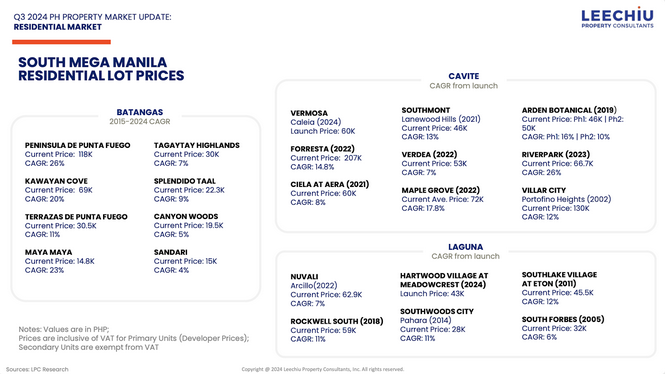South Mega Manila’s evolution: A megalopolis defined by scale and opportunity

South Mega Manila (SMM), comprising the provinces of Cavite, Laguna, and Batangas, is emerging as one of the Philippines’ most ambitious experiments in urban planning and regional development.
With a land area more than 10 times the size of Metro Manila, South Mega Manila holds the promise of becoming a sprawling megalopolis.
The principles that resonate with Blue Ocean Strategy—a theory that champions creating new, uncontested markets rather than competing in overcrowded spaces—reimagines South Mega Manila not as a competitor to Metro Manila but as a complementary, forward-looking alternative.
Rethinking the urban blueprint
Metro Manila’s density is both its strength and its Achilles’ heel, offering unmatched access to markets and services while grappling with congestion and limited space.
South Mega Manila, in contrast, offers breathing room—literally and figuratively. Its geography invites comparisons to Los Angeles County, a sprawling region where urban hubs sit alongside residential areas, industrial zones, and vast recreational spaces.
Spanning over 6,000 sq km, South Mega Manila offers opportunities for integrated living and working.
Industrial parks and corporate offices sit within proximity to recreational
havens such as championship golf courses and verdant nature parks. This is a place where an executive might feasibly move from a boardroom meeting to a site visit at a manufacturing hub, and still find time for a round of golf—all within a single day.
An ecosystem of collaboration
But the scale of South Mega Manila is not its only strength. What sets it apart is the potential for its townships to function as an interconnected ecosystem.
Developers are increasingly recognizing that competition within South Mega Manila can be counterproductive. Instead, there is a growing momentum toward collaboration: one township might excel as an education hub, while another focuses on leisure or industry, creating a patchwork of complementary services.
This approach could lower development costs while amplifying the region’s overall appeal. Just as Los Angeles County thrives on its diversity —from beach towns to business districts—South Mega Manila can leverage its unique geography and cultural richness.
A drive from the highlands of Tagaytay to the beaches of Nasugbu, for instance, reveals a region of striking contrasts, offering temperate retreats and coastal paradises just an hour apart.

A canvas for economic growth
While the potential for growth in South Mega Manila is undeniable, it is not without challenges. The region’s abundant supply and the risk of market cannibalization remain persistent concerns that still demand careful consideration.
Yet, even amid these concerns, South Mega Manila’s residential communities remain an attractive investment. Some horizontal developments in Cavite, for example, have seen compound annual growth rates (CAGR) of over 20 percent, while coastal luxury properties like Punta Fuego and Kawayan Cove have seen a recent boom in value, driven in part by the pandemic’s reshaping of lifestyle preferences.
Infrastructure is playing a pivotal role in unlocking South Mega Manila’s potential. Its pipeline of 1,500 km of new highways and railways is stitching together its disparate parts, transforming what were once isolated developments into a coherent and accessible whole.
Hub for innovation, lifestyle
As South Mega Manila continues to evolve, its trajectory is being shaped both by local policies and global trends.
The rising prominence of the wellness real estate market, projected to more than double in value to $913 billion by 2028, dovetails neatly with South Mega Manila’s offerings of green spaces and lifestyle-oriented communities. Government policies like the CREATE MORE Act, which aims to boost the Philippines’ manufacturing competitiveness, are likely to drive demand for industrial and mixed-use real estate.
Upcoming projects like Villar City’s expansion, Rockwell’s golf and beach estates, and Bloomberry’s Solaire Puerto Azul in Cavite promise to add depth to South Mega Manila’s ecosystem. Together, they are solidifying the region’s status as a hub not just for business but also for innovation and lifestyle.
Shaping the future
The growth of South Mega Manila presents a once-in-a-generation opportunity for businesses, developers, and investors to drive the region’s transformation while gaining significant potential for long-term rewards.
With its deep market insights and extensive experience, Leechiu Property Consultants helps clients navigate this evolving landscape, offering guidance on strategic opportunities and emerging trends. As South Mega Manila continues to expand and diversify, partnerships like these are essential in developing a sustainable, integrated future for the region.
The author is the manager for Investment Sales at Leechiu Property Consultants (LPC), the country’s premier real estate advisory firm.





















